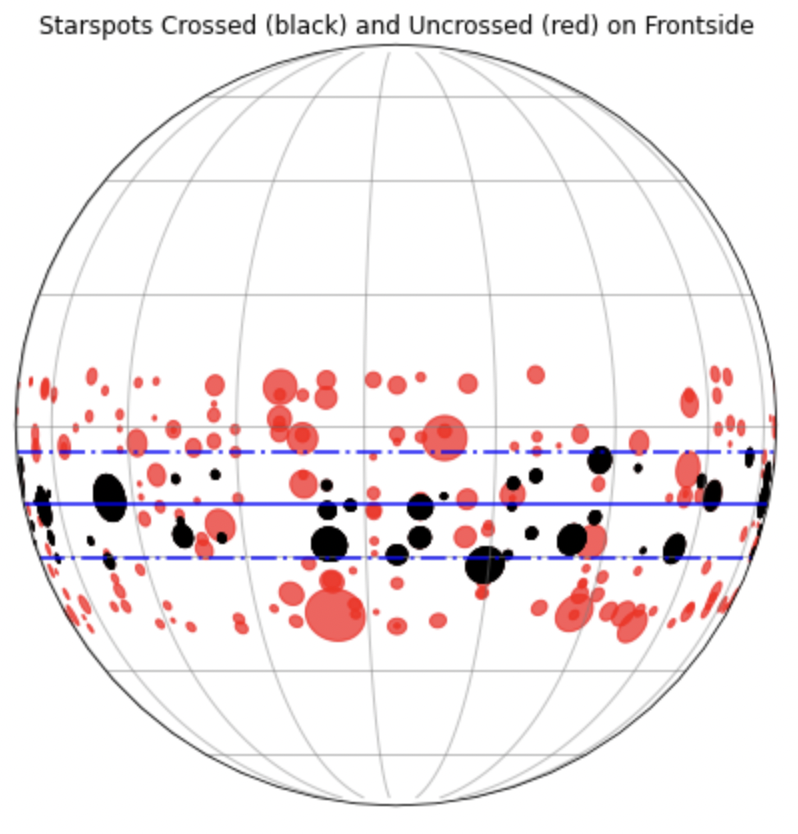
Understanding Starspot Lightcurves With The Kepler Satellite
by
Oliver Dewey
Pomona College
Claremont, California
April 2023
by
Oliver Dewey
Pomona College
Claremont, California
April 2023
Home
Telescope
Instruments
Research
Observing Aids
Public Outreach
User's Manual
ABSTRACT
This thesis explores a new method of starspot analysis which takes Kepler transit lightcurves and analyzes the variation of in-transit flux as compared to out-of-transit flux as a proxy for starspot crossings. I do this through describing a pipeline that consists of 3 separate programs all of my own creation. The first of these programs takes the Kepler data and normalizes it to then be used in a statistical comparison of in-transit to out-of-transit flux variation. The second program simulates a transit with the same parameters as the chosen system but with spots of known sizes, longitudes, and latitudes randomly placed within the path of transit. And finally, a third program is described which either (1) takes the Kepler data and performs a statistical analysis of the flux variations or (2) takes the simulated data and performs an analysis and mapping of those variations and stellar surface features. A final code then compares starspot simulations of different numbers, sizes, and contrasts in efforts of understanding optimal spot parameters which statistically match those seen in the data. Such a result demonstrates new information about the general spottiness of features which have such starspot crossing signatures, information that for many of these objects is completely unknown.
With this analysis, my thesis shows how accurate information (that is to say, the findings match current literature) is gathered for KIC 1061656571. For this object, I find that (1) there are more than 10 spots which need to be simulated at a time, (2) the sunspots are roughly 2.5 times that of the Sun, and (3) their contrasts are roughly 0.6. For KIC 8672910, I find that the simulation matches the data at a starspot number of 16, a size of 2.75, and a contrast of 0.7. For KIC 7767559, I find that that the simulation matches the data at a starspot number of 16, a size of 3, and a contrast of 0.7, numbers which take into account peculiarities in that system's data. And finally, using code to inspect KIC 7447200, I find the possible existence of stellar plages and a long-lived polar spot. Along the way, discussion is held of limitations and caveats of the programs as well as the math and science behind such work.
CODE